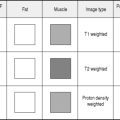Chapter 7 Respiratory system
Methods of imaging the respiratory system
Hansell D.M., Armstrong P., Lynch D.A., et al. Technical considerations. In Imaging of Diseases of the Chest, 4th edn, London: Elsevier/Mosby; 2005:1-26.
Klein J.S. Interventional chest radiology. Radiol. Clin. North Am.. 38(2), 2000.
Müller N.L. Computed tomography and magnetic resonance imaging: past, present and future. Eur. Resp. J.. 2002;19(35, suppl):3s-12s.
Computed Tomography of the Respiratory System
Technique
1 Boiselle P.M., Ernst A. Recent advances in central airway imaging. Chest. 2002;121(5):1651-1660.
2 Kashiwabara K., Kohshi S. Additional computed tomography scans in the prone position to distinguish early interstitial lung disease from dependent density on helical computed tomography screening patient characteristics. Respirology. 2006;11(4):482-487.
Computed Tomography-Guided Lung Biopsy
Indications
Contraindications
Equipment
Patient preparation
Aftercare
Complications
Anderson J.M., Murchison J., Patel D. CT-guided lung biopsy: factors influencing diagnostic yield and complication rate. Clin. Radiol.. 2003;58(10):791-797.
Aviram G., Schwartz D.S., Meirsdorf S., et al. Transthoracic needle biopsy of lung masses: a survey of techniques. Clin. Radiol.. 2005;60(3):370-374.
Manhire A., Charig M., Clelland C., et al. BTS Guidelines: Guidelines for radiologically guided lung biopsy. Thorax. 2003;58(11):920-936.
Richardson C.M., Pointon K.S., Manhire A.R., et al. Percutaneous lung biopsies: a survey of UK practice based on 5444 biopsies. Br. J. Radiol.. 2002;75(897):731-735.
Methods of Imaging Pulmonary Embolism
Roy P.M., Colombet I., Durieux P., et al. Systematic review and meta-analysis of strategies for the diagnosis of suspected pulmonary embolism. BMJ. 2005;331(7511):259.
Stein P.D., Woodard P.K., Weg J.G., et al. Diagnostic pathways in acute pulmonary embolism: recommendations of the PIOPED II investigators. Radiology. 2007;242(1):15-21.
Radionuclide Lung Ventilation/Perfusion (V/Q) Imaging
Indications
Radiopharmaceuticals
Ventilation
Technique
Perfusion
Ventilation
81mKr gas
99mTc-DTPA aerosol
1 Wang S.C., Fischer K.C., Slone R.M., et al. Perfusion scintigraphy in the evaluation for lung volume reduction surgery: correlation with clinical outcome. Radiology. 1997;205(1):243-248.
2 Win T., Tasker A.D., Groves A.M., et al. Ventilation-perfusion scintigraphy to predict postoperative pulmonary function in lung cancer patients undergoing pneumonectomy. Am. J. Roentgenol.. 2006;187(5):1260-1265.
3 Howarth D.M., Lan L., Thomas P.A., et al. 99mTc Technegas ventilation and perfusion lung scintigraphy for the diagnosis of pulmonary embolus. J. Nucl. Med.. 1999;40(4):579-584.
4 Freitas J.E., Sarosi M.G., Nagle C.C., et al. Modified PIOPED criteria used in clinical practice. J. Nucl. Med.. 1995;36(9):1573-1578.
Computed Tomography in the Diagnosis of Pulmonary Emboli
Technique
The technique will depend on individual CT scanner technology. Single-slice scanners require a longer scanning time than multidetector scanners. Individual CT manufacturers will advise specific scanning protocols tailored to the scanner technology and speed. The volume of i.v. contrast and the scan delay may need to be increased for larger build patients.
Computed tomography pulmonary angiography – enhanced scan of pulmonary arterial system1
Remy-Jardin M., Pistolesi M., Goodman L.R., et al. Management of suspected acute pulmonary embolism in the era of CT angiography: a statement from the Fleischner Society. Radiology. 2007;245(2):315-329.
Schoepf U.J., Costello P. CT angiography for diagnosis of pulmonary embolism: state of the art. Radiology. 2004;230(2):329-337.
Pulmonary Arteriography
Indications
Contraindications1
Contrast medium
Low osmolar contrast material (LOCM) 370; 0.75 ml kg−1 at 20–25 ml s−1 (max. 40 ml).
Additional techniques
Bronchial Stenting
Magnetic Resonance Imaging of the Respiratory System
MRI only has a limited role in assessing the respiratory system as the susceptibility artifact from the large volume of air makes imaging the lungs difficult. The mediastinum and chest wall are well assessed by MRI due to the ability to image in the coronal and sagittal plane. MRI is particularly useful in the assessment of superior sulcus and neurogenic tumours as it can give information on the nature and extent of any intraspinal extension. Fast sequences and cardiac gating may be used to minimize motion artifacts. However, CT is quicker and more widely available. Multidetector CT technology can now give excellent multiplanar and three-dimensional reconstruction.
In the future MR pulmonary angiography may have a role to play in the diagnosis of pulmonary emboli, but it will probably be limited to a small cohort of patients in whom there is a relative contraindication to radiographic contrast or ionizing radiation.1 At present, multi-detector CT scanning is the preferred method of investigation owing to its availability and ease of performance.
PET and PET-CT of the Respiratory System
In recent years, FDG-PET has become an essential lung-cancer imaging tool. A PET scan is currently recommended for the investigation of lung cancer where the lesion is greater than 1 cm in size. It also plays an important role in loco-regional and distant staging of non-small cell lung cancer (NSCLC). Patient preparation and the technique are fully described in Chapter 11. The scan can be performed either on an isolated PET scanner or a hybrid PET-CT scanner.





